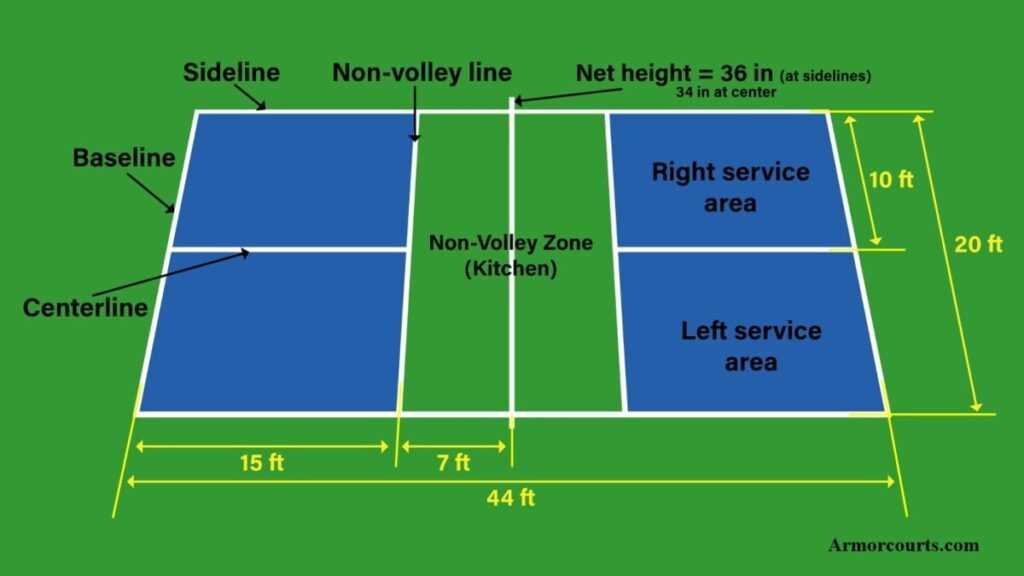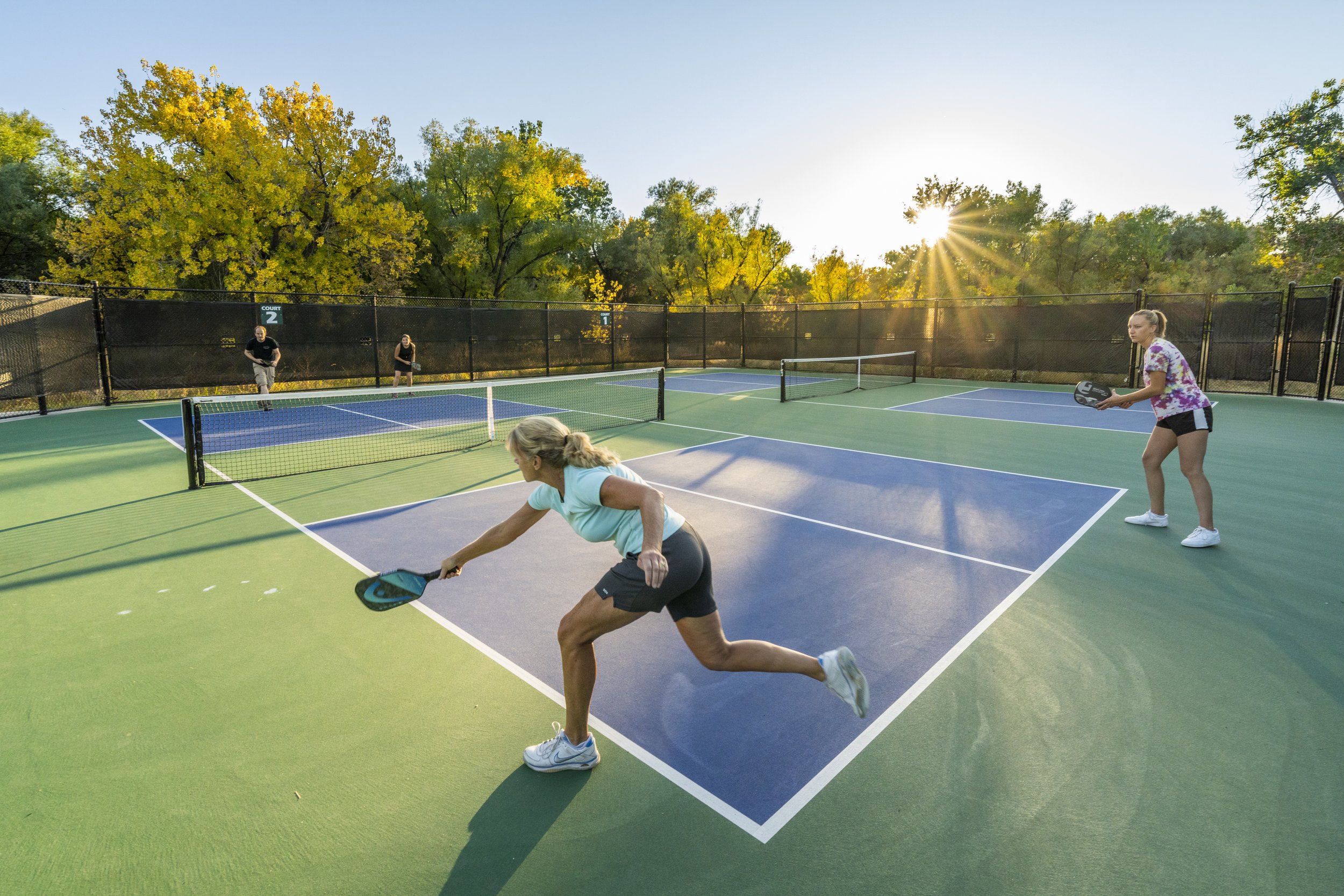Comprehensive Guide to Pickleball Judiciaries Layout & Building And Construction in Illinois and Midwest
Comprehensive Guide to Pickleball Judiciaries Layout & Building And Construction in Illinois and Midwest
Blog Article
Trick Aspects in the Construction of Pickleball Judiciaries: From Site Option to Final Coatings
The building of pickleball courts incorporates a series of critical aspects, beginning with the choice of an appropriate website that stabilizes availability with ecological considerations. Crucial aspects such as court measurements, surface products, and water drainage systems substantially influence not only the top quality of play however additionally the longevity of the facility. Focus to lighting and completing touches can boost the overall experience for gamers and spectators alike. Recognizing exactly how each of these elements interrelates might expose insights that are usually ignored, prompting a more detailed assessment of finest methods in court construction.
Site Selection Criteria
When starting the construction of pickleball courts, it is crucial to toenail down the website option requirements that will certainly ensure ideal playability and access. The location has to be easily obtainable for players, ideally situated near suburbs or recreation center, to urge engagement.
In addition, the surface must be level and stable, as uneven ground can bring about security risks and affect gameplay. Adequate water drainage is likewise important; choosing a site with excellent water overflow will aid preserve court conditions throughout adverse weather condition.
An additional vital factor to consider is the availability of energies. Accessibility to electricity and water is required for lights and maintenance functions. Additionally, closeness to auto parking centers is essential, helping with very easy access for gamers and spectators alike.
Ecological factors can not be neglected; natural shade from trees can improve gamer comfort, while direct exposure to prevailing winds might interfere with play. Lastly, zoning guidelines and community support must be taken into consideration to ensure that the task aligns with regional standards and gets the backing it requires for effective implementation. By very carefully reviewing these criteria, stakeholders can produce a welcoming and useful environment for pickleball lovers.
Court Capacities and Format
To make sure optimum gameplay and adherence to regulations, the measurements and format of pickleball courts should be very carefully defined. A common pickleball court determines 20 feet in size and 44 feet in length for both songs and doubles play. The recommended design includes a non-volley area, commonly referred to as the "kitchen," expanding 7 feet from the internet on either side. This location is essential, as it affects gamer positioning and shot selection - Illinois and midwest.
The internet height is evaluated 36 inches at the sidelines and 34 inches at the center, creating a slight dip that affects round trajectory. Court markings are just as vital; lines must be 2 inches large and unique in color to guarantee visibility.
Additionally, a barrier area surrounding the court is recommended, generally extending 5 to 10 feet past the sidelines and standards to accommodate players' activities and improve security. Proper format and measurements not only ensure conformity with official regulations yet likewise improve the overall having fun experience, fitting both recreational and affordable play. Cautious planning in these locations is critical to the effective building of pickleball courts.
Surface Product Options
Choosing the right surface area material for pickleball courts is critical for making sure optimal gamer performance and safety and security. The option of surface can substantially affect gameplay, consisting of ball bounce, grip, and player convenience.
There are several alternatives available, each with its distinctive qualities. Asphalt is a preferred choice as a result of its sturdiness and low upkeep demands. It gives a solid having fun surface area that see here can endure numerous climate condition yet may need routine resurfacing.
Concrete is one more extensively used material, offering exceptional long life and a smooth finish. It permits regular ball bounce however can be tough on gamers' joints, making it less desirable for lasting play without correct cushioning.
For those seeking improved convenience and shock absorption, supported acrylic surfaces present a feasible choice. These surfaces incorporate a base layer with an acrylic overcoat, providing boosted grip and a softer feel, which is beneficial for reducing the threat of injuries.
Finally, artificial lawn is getting traction, particularly for multi-purpose centers. Its flexibility and lower upkeep requires make it an eye-catching alternative, though it may not supply the exact same round feedback as traditional hard courts. Careful consideration of these options will guarantee an optimal playing environment.
Drainage and Lighting Considerations
Proper drainage and effective lights are essential parts in the building and construction of pickleball courts, significantly affecting both playability and safety and security. Ample drain systems stop water build-up, which can result in slippery surface areas and damages to the court structure. A well-designed drain plan incorporates sloped surface areas and ideal products to help with water flow far from the playing location - Illinois and midwest. This not only maintains the honesty of the court however also decreases downtime as a result of bad weather problems.
Lighting is just as crucial, specifically for courts intended for evening usage. Proper illumination boosts visibility, making sure that gamers can see the ball clearly and lowering the Check Out Your URL risk of mishaps. The positioning of lights fixtures must be purposefully planned to get rid of darkness and provide even distribution of light throughout the court. LED lights are recommended for their energy performance and longevity, providing brilliant lighting while reducing operational expenses.

Final Finishes and Maintenance
After attending to drain and illumination factors to consider, focus transforms to the last surfaces and recurring upkeep of pickleball courts. Illinois and midwest. The selection of surface area product is important, as it affects both playability and sturdiness. Typical alternatives include acrylic finishes and specialized sporting activities surfaces that offer ideal traction and cushioning. These surfaces should be applied in numerous layers to guarantee strength against climate components and put on.

Seasonal maintenance may consist of resurfacing every few years, depending on use and environmental aspects. Properly preserving webs, court lines, and surrounding areas is just as important to offer a safe and satisfying having fun experience. By buying high quality coatings and adhering to a structured upkeep timetable, facility owners can ensure their pickleball courts continue to be in excellent problem for several years to come.
Conclusion
In conclusion, the effective building of pickleball courts hinges on thorough focus to a number of essential factors. Top quality coatings and a robust upkeep routine are vital for preserving the court's problem, improving the overall experience for players Bonuses and viewers alike.
Report this page